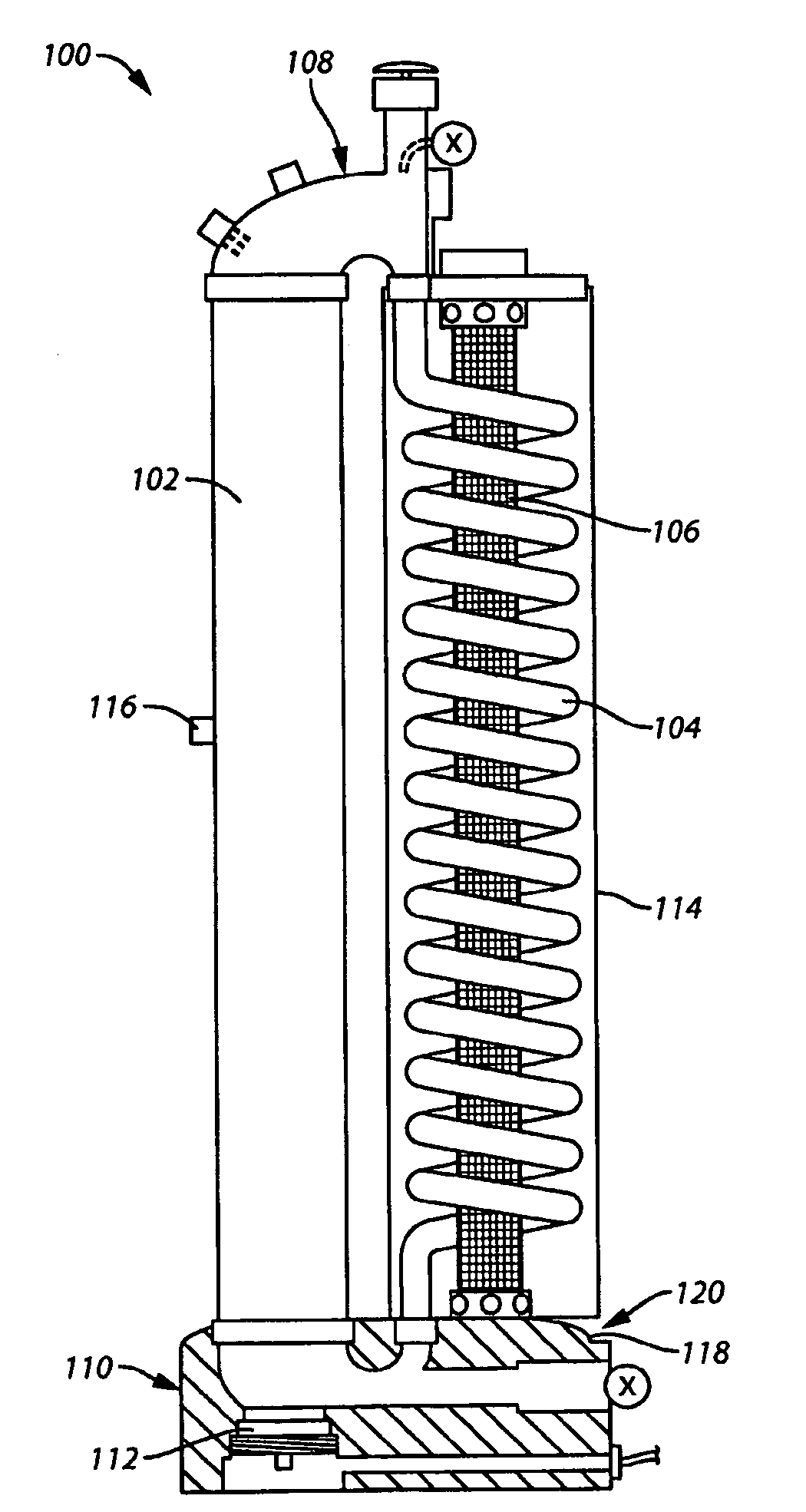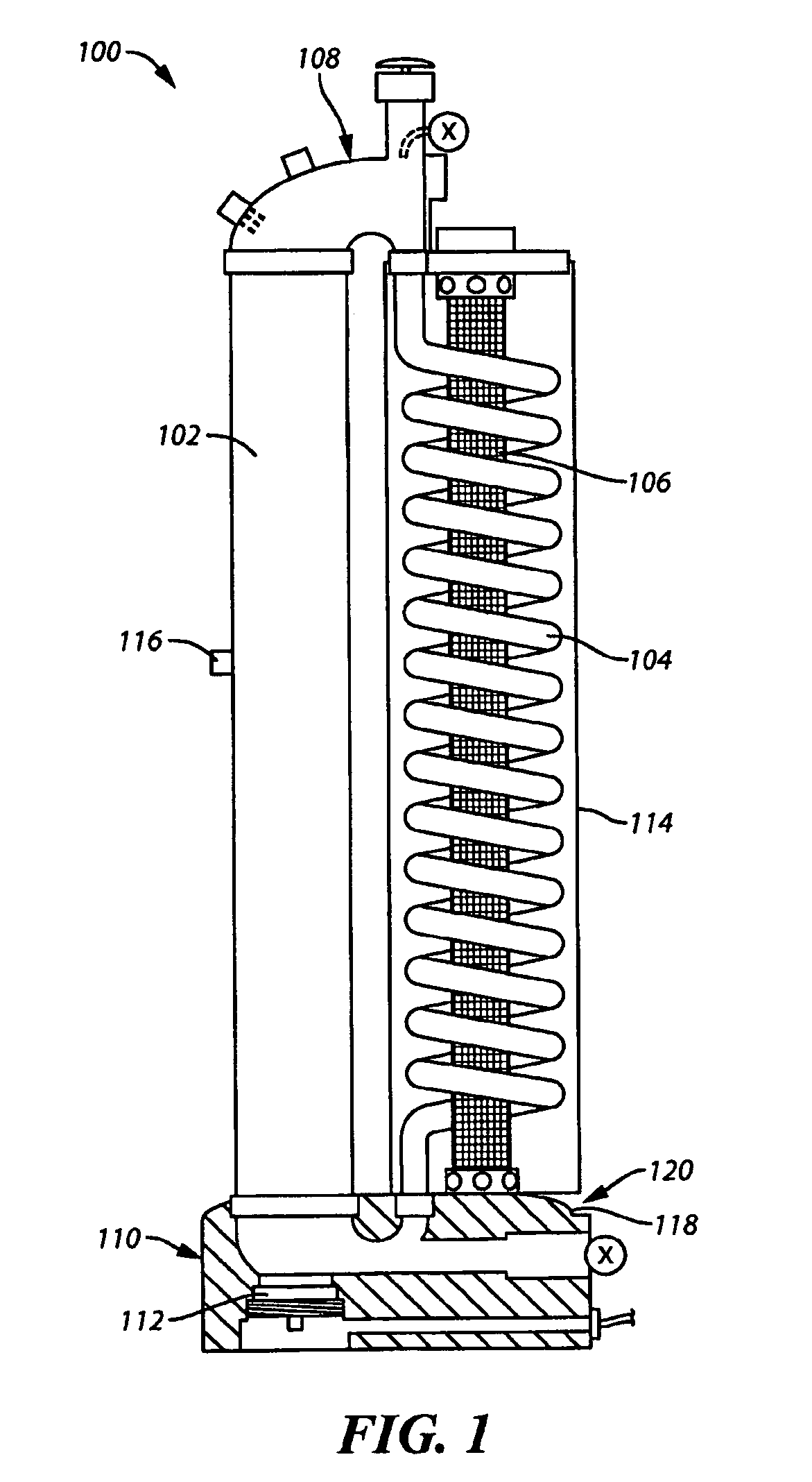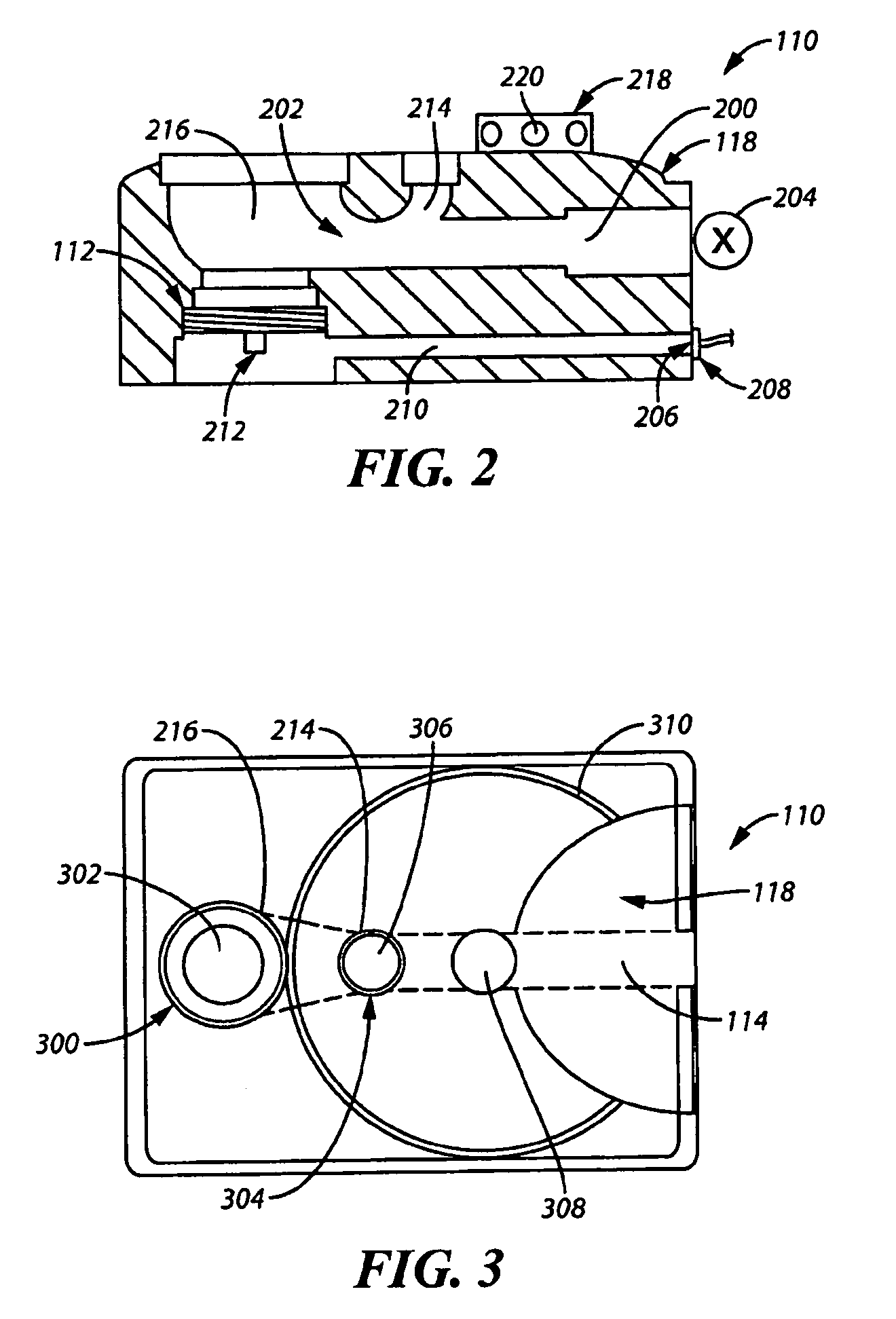Photobioreactor and method for processing polluted air
a photobioreactor and polluted air technology, applied in the field of algae photobioreactors, can solve the problems of increasing the land space requirements of pond-based photobioreactors, inefficient light use, and difficulties in open-channel photobioreactors such as ponds
- Summary
- Abstract
- Description
- Claims
- Application Information
AI Technical Summary
Benefits of technology
Problems solved by technology
Method used
Image
Examples
Embodiment Construction
[0031]These and other benefits may become clearer upon making a thorough review and study of the following detailed description. Referring now to the drawings, and in particular to FIG. 1, a photobioreactor 100 for use in treating polluted air and producing biomass is illustrated. The photobioreactor 100 may comprise, at least in part, a generally vertical tube or fluidic pathway 102, a generally vertical helically shaped tube or fluidic pathway 104 having a light source 106 position within the generally vertical helically shaped fluidic pathway 104, a head cap assembly 108, and a base assembly 110. A removable cover 114 may be positioned around the outside of the generally vertical helically shaped fluidic pathway 104 and the light source 106. By one approach, the removable cover 114 includes a reflective interior to reflect the light emitted by the light source 106 back toward the generally vertical helically shaped fluidic pathway 104. In one illustrative example, the light sourc...
PUM
 Login to View More
Login to View More Abstract
Description
Claims
Application Information
 Login to View More
Login to View More - R&D
- Intellectual Property
- Life Sciences
- Materials
- Tech Scout
- Unparalleled Data Quality
- Higher Quality Content
- 60% Fewer Hallucinations
Browse by: Latest US Patents, China's latest patents, Technical Efficacy Thesaurus, Application Domain, Technology Topic, Popular Technical Reports.
© 2025 PatSnap. All rights reserved.Legal|Privacy policy|Modern Slavery Act Transparency Statement|Sitemap|About US| Contact US: help@patsnap.com



